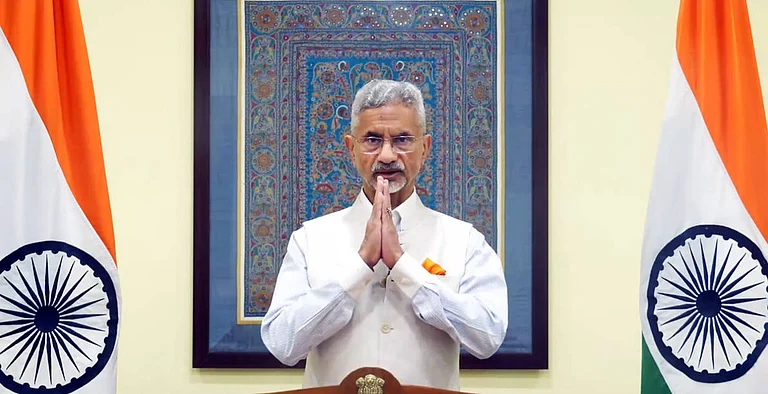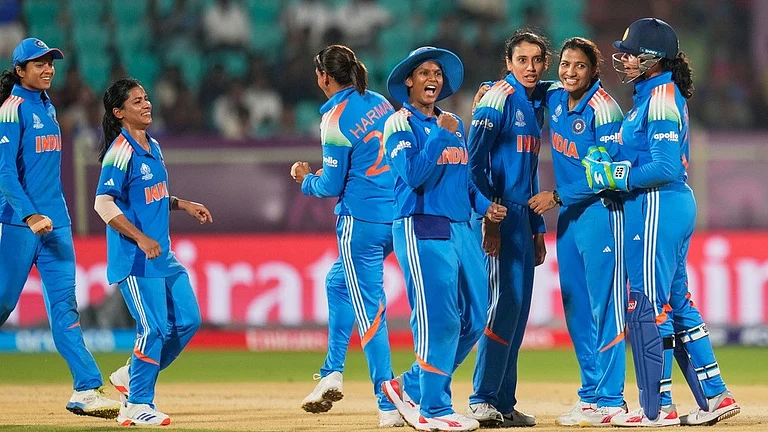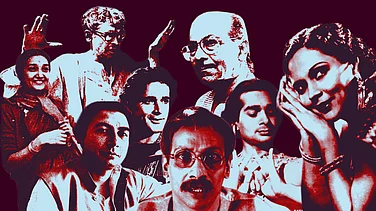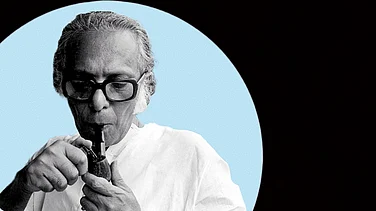In the grimy, bizarre world of Bollywood action where actors crash into sugar-candy ‘glass’, amber-coloured powder blows up into fireballs and plastic guns kill, the blood and tears of Khan’s ilk often become all too real. They create some of Bollywood’s magic, but get little credit and languish in their chawls eking out a dangerous living. The legions of young men who come into the industry, lured by its glamour, find that only the burns and bruises are for real, not the glitz or the money.
Amar Sumra has a haircut and moustache that’s more Anil Kapoor than Anil Kapoor’s. He has been in the industry, blasting bombs and burning up people, "before I was even old enough to have a moustache". He loved movies so much that he ran away from his Gujarat village and came to Bollywood. Fifteen years on, Sumra has worked on too many films to remember, burning buildings, flying in the air, getting suspended from the 30th floor of a building or being blasted from a tank. Only, the last one was for real.
On the sets of Border in Bikaner, Rajasthan, Sumra was planting a bomb inside a tank, which was to go up in flames on cue. The shot before would show the hero destroying the tank with his fake gun. The bomb went off early, burning Sumra’s ears and hands. Producer J.P. Dutta paid for his treatment and Sumra was back in action in a few months. "What else was I to do?" he asks.
Arun Patil, president of the association, and one of the best-known special effects (SFX) ‘masters’, says burns and bruises are fairly common but more serious accidents too occur often. "Most assistants are semi-literate and cannot do anything else." SFX provides relatively skilled work and sometimes even regular income, often to unskilled people.
This high-risk, low-pay, little-seen work is linked to Bollywood’s old obsession with low-budget curry westerns, a rage in the ’70s and ’80s. There, a villain dangling from a chopper would throw a bomb to ‘kill’ the hero. The SFX people would—and still do—use homegrown ingredients to pull it off. Petrol and an enlarged, reassembled firecracker are packed into a polythene bag and padded with iron plates. A smaller, second bomb is set off using a switch connected to a wire, which then burns the plastic bag letting off a lot of sound and fury.
While it’s the fight and SFX masters who choreograph the action, it’s assistants like Sumra who open up firecrackers for the big bang. Five years ago, a bomb exploded on the sets of a movie causing SFX assistant Sreenivas Naik to lose one eye, a hand and sustain severe burns. An electrician, Naik can’t work anymore though he has two children and old parents.
And he, like most of his colleagues, has no insurance. "Their work is so high-risk that companies don’t want to insure them," says Patil. Stuntmen have life insurance, albeit high-premium ones, and now SFX assistants too want insurance. (Almost all 250 members paid for a policy in 1998 but most lapsed as they couldn’t pay premia on time). Assistants like Sumra and Naik are paid some Rs 900 per shift and normally do about 40-50 shifts a year. But payments are irregular. "We’ve to work with the same people so we can’t trouble them for money," says Sumra.
Besides, with Bollywood slowly shunning tacky action and old-style SFX, work itself is shrinking. But the assistants still risk the danger and keep on working. Some continue in the hope that they can keep checking the ropes that will hold Hrithik Roshan while he dangles from a building, even if they fall in the process. They know that theirs is a job fraught with risk and noticed only when it goes wrong. "If a shot goes well, the director or fight master congratulate the SFX master, never us," says Razzaq Khan, an SFX assistant. So they keep themselves happy with perks like a wave from the stars whose harnesses they’re testing (without the nets or mattresses underneath them.) "Jackie Shroff and Dharmendra always smile for us," says an assistant. Small mercy, but it makes their day.

























